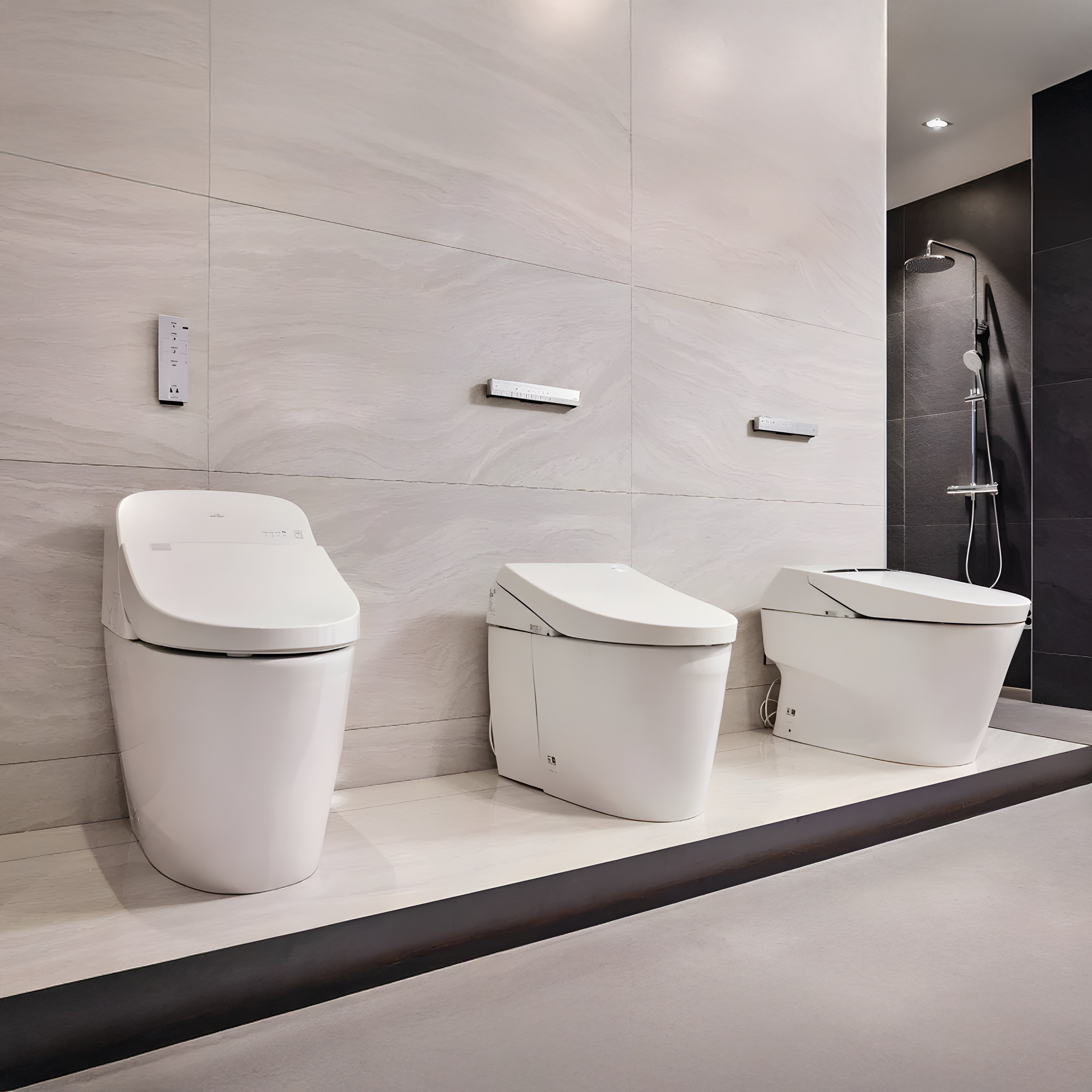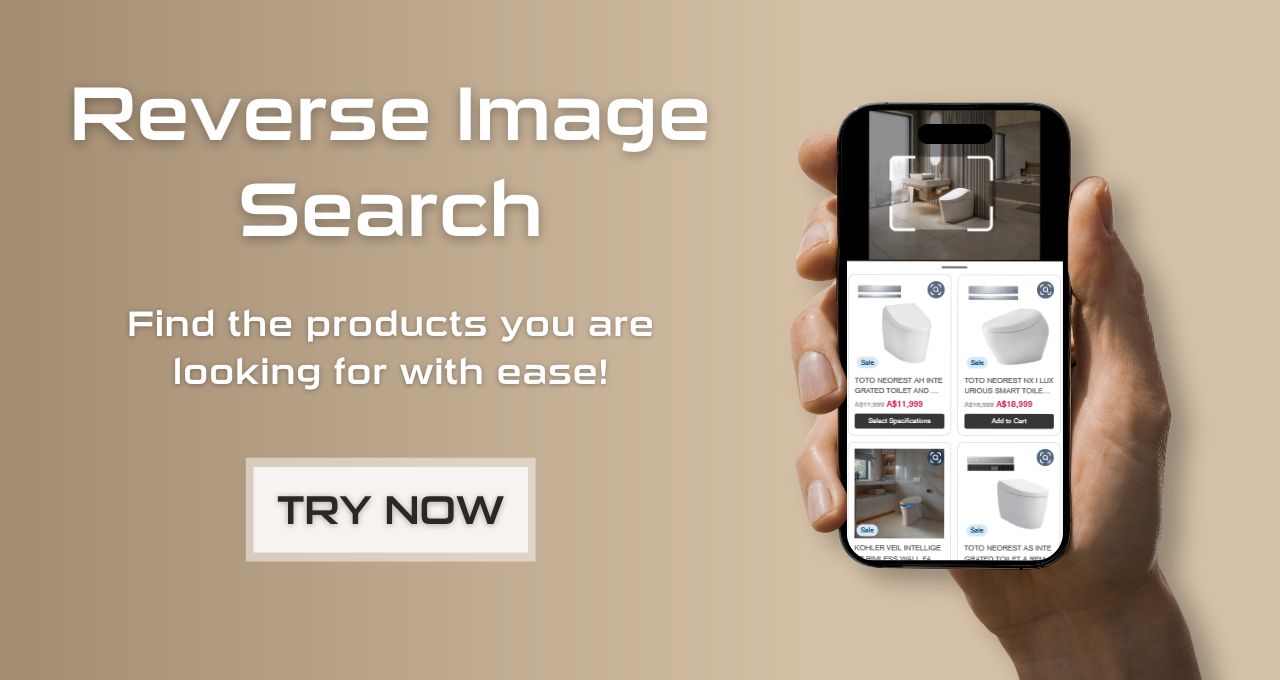If you got mud on your hands, would you simply wipe it off with a dry paper towel or wash them with water? Most of us would wash without hesitation. Yet when it comes to using the toilet, many people in Western countries still rely solely on dry toilet paper. This everyday habit is something TOTO’s “Wash Not Wipe” campaign is challenging, and for good reason. Washing with water (using a bidet) is not only more hygienic, but also gentler on your body and better for the environment. In fact, only about 25-30% of the world’s population uses toilet paper; the rest use water or other cleansing methods.
In places like Asia, the Middle East, and much of Europe, cleaning with water after using the toilet is standard practice, and it’s catching on elsewhere. The recent toilet paper shortages (during the 2020 pandemic) gave many Australians and others a glimpse of alternatives, as interest in bidets suddenly surged (Google searches for bidets in Australia spiked over 1,000% in March 2020 , and local distributors reported inquiries jumping ~200%). Clearly, there’s a growing curiosity about bidets. But why should you wash, not wipe?
Let’s explore the key reasons, from hygiene and personal wellness to environmental and modern comfort benefits, that make bidets a smart upgrade for your bathroom routine.
Elevating Hygiene in the Bathroom

Water versus paper: a bidet sprayer in one hand and toilet paper in the other. The fundamental hygiene argument is simple, water cleans more thoroughly than paper.
The first and most obvious reason to switch to washing is better cleanliness. We use water to clean virtually everything that gets dirty, our hands, our dishes, our clothes, because it’s incredibly effective at removing residue. Why should our bottoms be any different? Using a bidet (which applies a gentle stream of water) can provide a far more thorough clean than wiping with paper.
Quite simply, water can remove trace amounts of faecal matter that dry toilet paper might leave behind. A few squares of tissue can’t always get into all the nooks and crannies, but a focused water rinse can rinse away what paper might miss. This means less lingering bacteria and a lower chance of odour or irritation.
Washing is also more sanitary for your hands. Think about it: wiping with toilet paper inevitably means your hand is in close contact with the mess, and there’s a risk of getting faecal germs on your skin or under your nails. (Proper handwashing after using the toilet is crucial in any case, but with wiping it’s especially important.)
Bidets, on the other hand, allow for nearly hands-free cleaning of your private areas. The water does the work, so you’re not physically smearing or touching anything, you simply pat dry afterward. As a result, you reduce the chances of spreading bacteria around. Medical experts note that bidets can be considered more sanitary than traditional wiping for exactly these reasons .
It’s no surprise that bidet toilets are standard in parts of the world where hygiene is taken seriously, Japan being the leading example. High-tech bidet systems like TOTO’s WASHLET have been widely adopted there for decades, and by 2002, nearly half of all Japanese households had one installed. In fact, TOTO is Japan’s No.1 smart toilet brand and the company widely credited with pioneering and popularising the smart toilet movement worldwide.
In these cultures, using water for personal hygiene is considered the cleaner, more respectful choice. In contrast, the Western hesitation around bidets has largely been cultural, yet the hygiene difference is difficult to dispute. Once people understand the logic, it becomes clear: if you wouldn’t just wipe your muddy hands, why only wipe after using the toilet? Water wins the cleanliness argument, every time.
Bidets and Wellness

Beyond just getting you truly clean, bidets contribute to your health and comfort in ways toilet paper can’t. One major benefit is that washing with water is much gentler on your skin. Dry wiping can be abrasive, it can cause chafing and even tiny tears in the skin around the sensitive perianal area. Over time, frequent wiping (especially with rough paper) may lead to irritation, itching, or worsening of conditions like haemorrhoids.
A bidet’s soft stream of water, by contrast, cleans without friction, helping you avoid that daily wear-and-tear on your skin. As Cleveland Clinic experts note, the concerns of chafing and micro-cuts are “washed away with a bidet”. Many people who suffer from haemorrhoids or anal fissures find bidets markedly more comfortable to use than toilet paper, since the warm water soothes and cleans without aggravating sensitive tissues.
Bidets can also improve personal wellness by supporting conditions that require extra hygiene. For example, individuals prone to urinary tract infections or women during menstruation often appreciate the cleaner feeling that water provides (especially when used front-to-back, as recommended). New mothers in postpartum recovery are frequently encouraged to use peri-bottles (a kind of manual bidet) to gently clean sensitive areas.
In general, using water can help reduce lingering bacteria that could cause infections if not cleaned properly. Doctors have even begun recommending bidets to certain patients, particularly older adults or those with mobility or dexterity challenges, as a helpful hygiene aid . The simple ease of use is a wellness factor: if you have arthritis, limited motion, or any condition that makes reaching around to wipe difficult, a bidet can be a game-changer. The setup of a bidet (especially an attached bidet seat) makes cleaning your backside much easier if you have mobility issues or trouble twisting to wipe . This means people can maintain their independence and cleanliness without straining themselves.
Another aspect of “wellness” is just how refreshing using a bidet feels. Many first-time users report that they simply feel cleaner and more confident after washing with water compared to wiping. There’s no sticky residue, no uncomfortable dryness – just a pleasant clean feeling. Modern bidet seats often include features like warm water spray and even a warm air dryer, turning a mundane bathroom trip into a spa-like experience. The warm water can be especially comforting, helping you relax (some even say it’s therapeutic for conditions like constipation or itching). TOTO’s WASHLET, for instance, provides a soothing aerated water cleanse and a gentle warm-air dry, leaving users more refreshed than ever after a bathroom break .
In cold weather, a heated seat can make your bathroom visit much more cozy too. All these comforts add up to better wellness: your daily routine becomes less irritating, more pleasant, and even a little luxurious. And importantly, health professionals affirm that bidets are generally safe and effective for hygiene as long as they’re used properly and kept clean. In short, bidets are not only about hygiene – they’re about feeling good and taking care of your body’s well-being.
Environmental Benefits
We’ve talked about personal benefits, but the case for bidets gets even stronger when you consider the environmental impact. Toilet paper production and use carry a hefty ecological footprint. Think about the resources needed to make those soft white sheets we flush away daily: trees, water, energy, and chemicals. The numbers are eye-opening.
According to one analysis, roughly 27,000 trees worth of toilet paper are flushed or thrown away every single day around the world. Over a year, that’s on the order of 15 million trees used just for something we use once and dispose of. The average person uses around 85 rolls of toilet paper per year (some estimates say closer to 100), which over a lifetime might add up to hundreds of trees per person. And it’s not just the trees, consider the water and energy required to manufacture all that toilet paper.
Producing a single roll of toilet paper consumes approximately 140 litres of water, along with about 1.3 kilowatt-hours (kWh) of electricity, and involves the use of bleaching chemicals. When multiplied by the billions of rolls consumed annually, the strain on our natural resources becomes evident. In the United States alone, it’s estimated that toilet paper manufacturing uses over 1.79 trillion litres of water each year. Ironically, this is significantly more water than what bidets would use for cleansing purposes.
By switching to a bidet, you dramatically reduce your reliance on toilet paper. A typical bidet spray uses only a small amount of water per use, approximately 500 millilitres, or about half a litre on average. That’s negligible compared to the gallons upon gallons embedded in producing the equivalent toilet paper. One eco-analysis found that a household that installs a bidet can reduce their toilet paper usage by 80% or more.
In other words, four out of five toilet paper rolls (or possibly all of them) could be eliminated. Even if you still use a few sheets to pat dry, the reduction in paper use is huge. Less toilet paper used means fewer trees cut down and less energy and water wasted on manufacturing, packaging, and transport of TP. It also means less waste in landfills and sewage systems, those millions of tons of used paper have to go somewhere. By washing not wiping, you’re preventing a lot of resource depletion and pollution upstream in the production process. As the Sharp HealthCare newsletter notes, toilet paper is made from wood pulp, water, and chemicals like bleach, so cutting back on it “saves valuable natural resources”.
Using a bidet is also septic and sewer-friendly. Without loads of toilet paper going down the drain, you reduce the risk of clogged pipes and plumbing issues in your home. Municipal sewer systems benefit too, fewer paper clogs and less volume to process. And importantly, bidets can help people avoid using so-called “flushable” wet wipes for extra cleaning, which in reality are notorious for clogging sewers and causing fatbergs (congealed masses of wipes and grease). By providing a water rinse, bidets offer a solution that doesn’t result in a plumbing nightmare or added landfill waste.
In summary, bidets align with an eco-friendly lifestyle: you’ll save trees, conserve water in the big picture, cut down on solid waste, and even reduce your household carbon footprint. It’s a simple change that, if adopted widely, could have a meaningful positive impact on the environment, all while you enjoy a cleaner derrière.
Modern Bathroom Upgrade: Comfort and Convenience
Beyond hygiene, health, and environmental factors, there’s another compelling reason to consider the switch: today’s bidets can greatly enhance your bathroom experience. Far from being old-fashioned or cumbersome, modern bidet attachments and bidet-toilet combos represent a smart upgrade for your home.
Installing a bidet seat (like TOTO’s WASHLET) is often as easy as changing out your old toilet seat, it can be done in under an hour with basic tools , and without any major plumbing overhaul. Once installed, you’ve effectively turned your ordinary toilet into a hi-tech cleansing system. Many models are designed to be user-friendly and integrate seamlessly into Western bathrooms. You don’t need a separate porcelain bidet fixture (as in older European bathrooms) if you opt for a bidet seat or a spray attachment; it fits right on your existing toilet, saving space and avoiding any drastic renovations.
What do these modern bidet systems offer? In short: comfort and convenience at the push of a button. For instance, TOTO’s electric WASHLET seats come with features that pamper the user. Think heated seats (no more cold shock on winter mornings), adjustable water temperature and pressure, and oscillating or pulsating spray options for an effective cleanse. Some units even have built-in deodorisers, night lights, or automatic lid open/close functions, the epitome of a smart toilet.
After cleaning with water, many bidets offer a gentle warm air dryer, meaning you might not need toilet paper at all except maybe as a backup . All these features are about making your bathroom trip as comfortable as possible, leaving you feeling fresh and relaxed. It’s the kind of upgrade that, once you experience it, you wonder how you lived without it.
Modern bidets are also about convenience and improved daily routine. They are ready at all times, no worries about running out of toilet paper (and no more bulk TP storage taking up space). If you have kids or elderly family members, a bidet can simplify their hygiene needs and give you peace of mind that they’re getting clean without assistance. The controls on contemporary bidets (often a simple side panel or remote control) are straightforward, and you can personalise settings to your liking. For households that might be nervous about trying it, there are many affordable attachment kits to experiment with, and they often convert skeptics into enthusiasts quickly.
In Japan and other countries where bidets are common, travellers from Australia, the US, and elsewhere often come back raving about how clean and high-tech the bathroom experience was. The good news is that this “luxury” is increasingly accessible and affordable in Western countries now. In fact, millions of people in North America, Europe, and Australia have already shifted from wiping to washing by installing bidet seats in recent years. Upgrading your toilet with a bidet is not only an investment in hygiene and health – it’s also a way to bring your bathroom into the 21st century with a touch of comfort and sophistication.
It’s Time to Wash, Not Wipe
After considering all these points, the conclusion is clear: using a bidet to wash instead of relying solely on toilet paper to wipe is a smart, beneficial change. It reflects a practical understanding of hygiene (water cleans more effectively than paper), enhances personal comfort and well-being, and supports a more sustainable, modern lifestyle.
Embracing the “wash not wipe” approach means adopting a new standard of cleanliness, one that many people around the world already live by, and which is now easier than ever to adopt in Australia or any Western home. If you’re feeling unsure, remember that almost everyone who tries a bidet consistently ends up a fan of the freshness and convenience it provides. There’s a reason bidet users swear they’d never go back to the old way; it just feels cleaner and healthier.
Consider rethinking your toilet routine. Whether you start with a simple bidet attachment or invest in a fully featured electronic bidet seat, the transition is easier than you might think. Brands like TOTO have made installation straightforward, and at Austpek, our WASHLET product pages include step-by-step installation guides to help you get started with confidence. Once you experience the difference, improved hygiene, gentler care for your skin, and a noticeable reduction in toilet paper use, you’ll wonder why you didn’t make the switch sooner.
Explore the range of TOTO WASHLETs at Austpek today and take the first step toward a cleaner, smarter bathroom experience.






